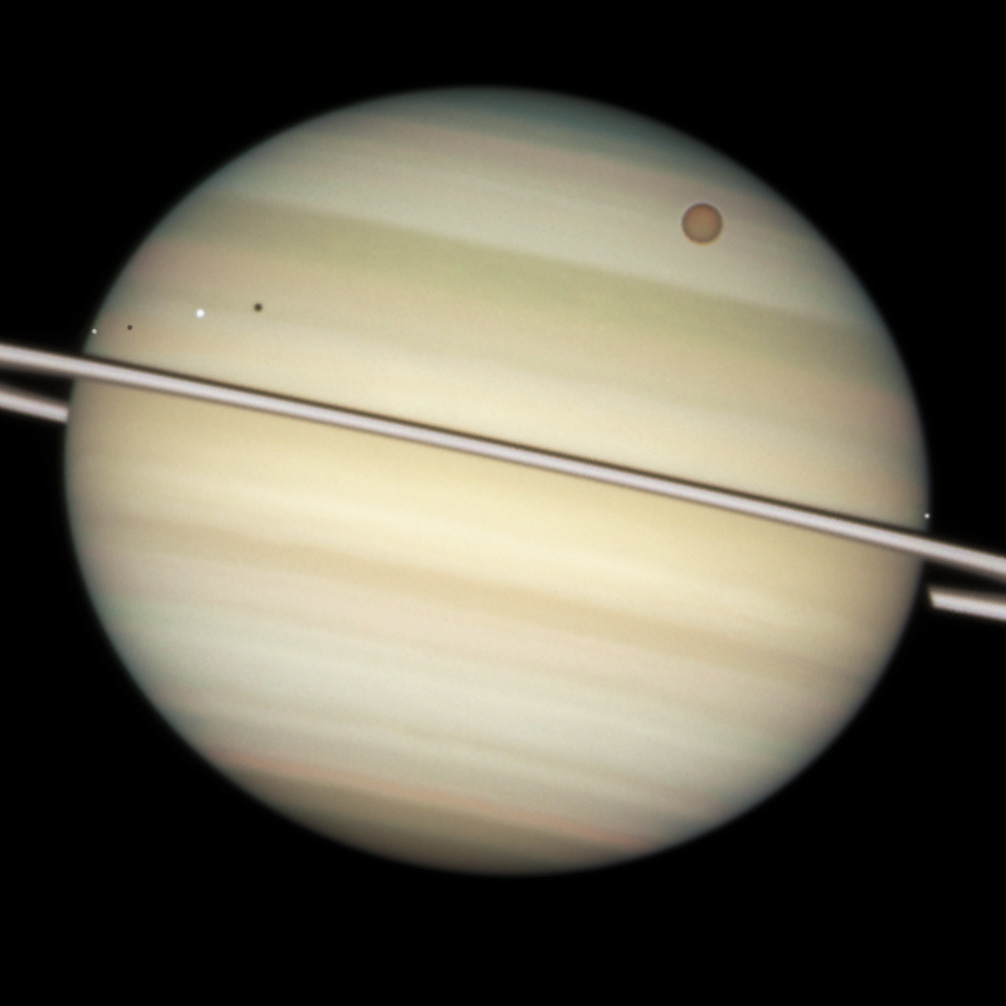Natural satellites are natural celestial bodies that orbit around a planet of the Solar System. But did you know that another commonly used term for denoting a natural satellite is “moon”? You’ve all probably seen the Moon in the night sky! The Moon is Earth’s natural satellite that continuously orbits around our planet. However, other planets of our Solar System do have natural satellites, or moons!
Jupiter’s Moons
Probably the best known moons (other than our own planet’s Moon) are Jupiter’s: Ganymede, Callisto, Io and Europa. Jupiter has 79 moons in total, but these 4 are the biggest and the most visible from Earth! They’re called Galilean moons, because they were first discovered by Galileo Galilei in 1610 as the first natural satellites that would orbit another planet than Earth! The 4 Galilean moons are visible in the night sky with almost any telescope and are a beautiful sight during a stargazing session.

Saturn’s Moons
Saturn has got 82 moons. However, as the planet lies further away from Earth than Jupiter, and because the majority of the ringed planet’s moons are small in diameter, only one – Titan – is rather easily visible through a telescope from Earth.

Other Moons
Mars, Uranus and Neptune also have their own moons, all varying in sizes from about 10 km diameter to as big as Neptune’s moon Triton, of approximately 2710 km in diameter!
The Moon
But now, coming back to earth’s Moon – did you know that this natural satellite is the brightest celestial body visible in the night sky? Its apparent magnitude varies from -2.50 during the New Moon phase, to -12.90 when it’s a Full Moon.
By the way, apparent magnitude measures the brightness of a celestial body (star, moon, satellite or any other astronomical object) observed from Earth. The lower the magnitude is, the brighter the object appears. As information, the Sun in the daytime sky has the apparent magnitude of -26.74 and the unaided human eye can see in the night sky magnitudes of up to around +3 (in relatively high light-polluted areas) or +5 (under very clear dark sky conditions).

…And did you also know that the Moon’s apparent size in the sky is almost the same as that of the Sun? The Moon’s diameter is, of course much, much smaller than that of the Sun: approximately 3500 km vs. the Sun’s 1.4 million km. But the relatively short distance between our planet and the Moon (384400 km), compared to the distance from Earth to the Sun (150 million km), makes the apparent size of the two celestial bodies approximately the same. Moreover, this relatively similar apparent size makes it possible for the Moon to cover the Sun almost precisely during a total solar eclipse! However, as the Moon’s distance from Earth continually increases, this “perfect” match between the two similar apparent sizes will stop occurring in the far future and total solar eclipses will not be possible anymore.
Oh, and did you know that the Moon is also responsible for the tides? Ocean tides are the continuous rise and fall of sea levels, which occur because of the concurrence between the Moon’s and Sun’s gravities, combined with Earth’s rotation! But more about this subject in another article!


2 replies on “Natural Satellites”
Discover what magnitude is – a common term used in Astronomy
Find out all you need to know about earthshine